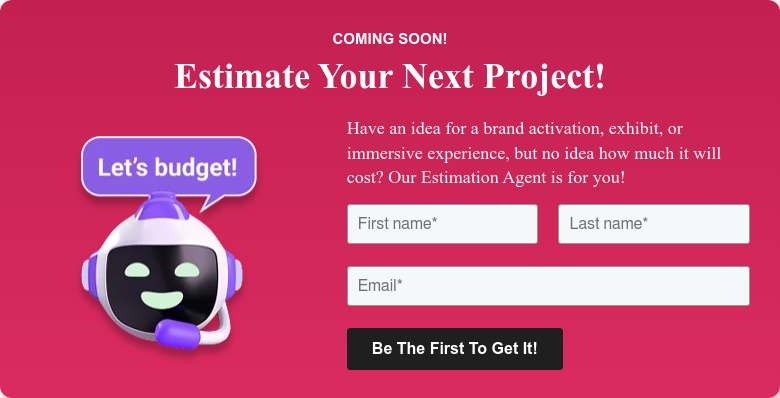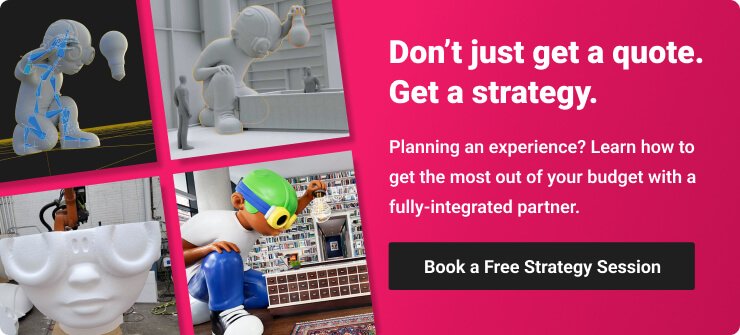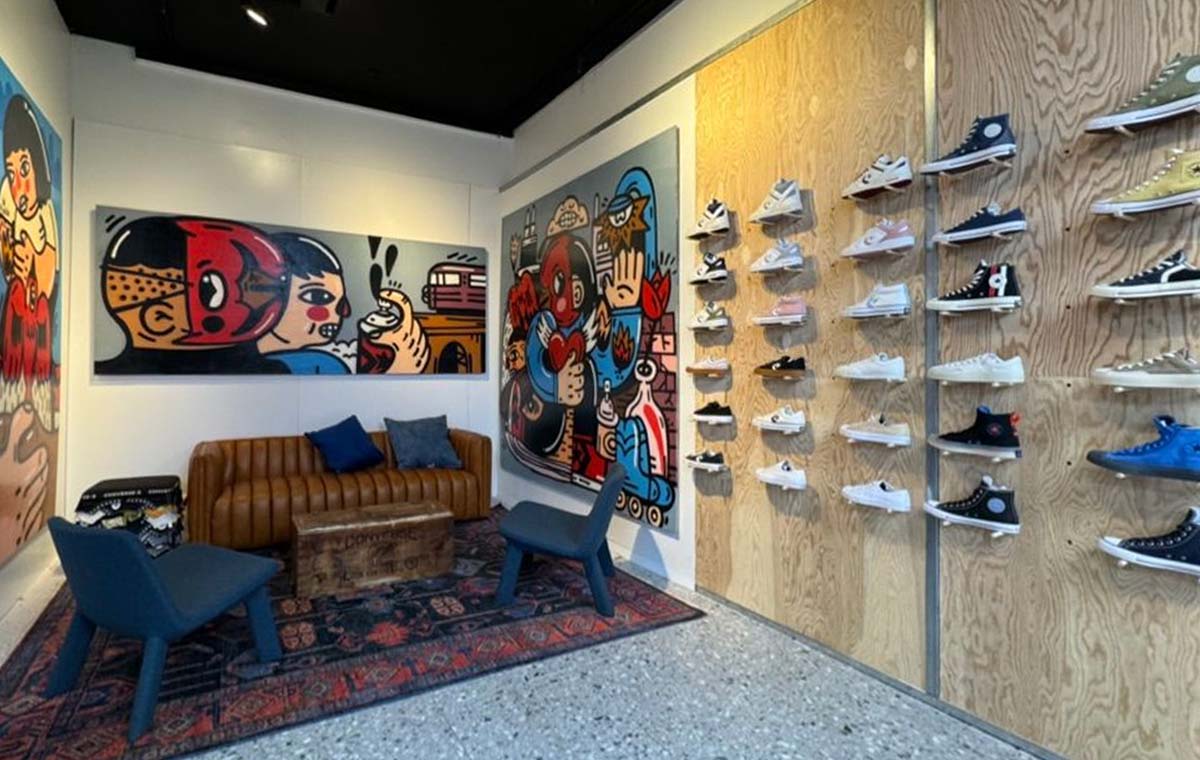Remember when handing out free pens was the pinnacle of brand activation? Well, times have changed, and so have your customers. Today's audiences crave experiences, not just freebies.
As a brand manager or marketing leader, you're probably wondering how to cut through the noise and create lasting impressions. That's where experiential brand activations come in. When done well, these engaging, immersive experiences captivate audiences and take brand awareness and affinity to a new level.
In this article, we'll dive into seven experiential brand activation strategies that will make your brand unforgettable. From immersive storytelling that'll have people talking for weeks, to multimedia interactions that'll make your competitors green with envy. We'll explore how to turn your activation into an Instagram hotspot, engage all five senses, and even let your customers co-create with you.
Intrigued? You should be. These aren't your average marketing tactics – they're the secret weapons of brands who've mastered the art of experiential marketing. Ready to join their ranks?

Experiential Brand Activations: 7 Winning Strategies
Strategy 1: Spatial Storytelling
What if your customers could walk right into your brand's story? That's the power of spatial storytelling. It transforms your narrative into a tangible, multi-dimensional experience that consumers don't just observe—they live it. It leverages physical space to educate, inform, and inspire your audience.
Refinery29's 29Rooms exemplifies this approach. They created a labyrinth of 29 individually curated spaces, each telling a unique story aligned with their brand values. The result? A deeply engaging experience that traditional media simply can't match.
Why does it work? A physical, 360-degree brand experience stands out in a world saturated with digital ads. It forges emotional connections that stick, creating brand advocates, not just customers. It also creates a level of connoisseurship by allowing customers to engage with your brand in 3-dimensions.
To implement spatial storytelling:
- Identify your core brand narrative
- Design a physical journey that brings this message to life
- Incorporate multi-sensory elements to enhance the immersion
- Ensure each touchpoint reinforces your brand narrative
Strategy 2: Tech-Powered Interactions
Welcome to the future of brand activations. AR, VR, AI, and projection mapping aren't just buzzwords—they're powerful tools for creating novel, interactive experiences that captivate your audience.
Consider Snapchat's AR lenses. They've turned everyday spaces into playgrounds for branded experiences, allowing users to interact with products in their own environment. Isn't that more engaging than a standard ad?
The benefits? Increased engagement, enhanced data collection capabilities, and potential for viral sharing. But remember, always weigh the cost against the potential impact. Sometimes, a low-tech solution with high creativity can yield comparable results at a fraction of the cost.
Strategy 3: Social Media Integration
In 2024, if your brand activation isn't shareable, is it even happening? The Museum of Ice Cream got this right, creating an Instagram paradise that resulted in millions of organic posts. Talk about extending your reach!
Why does it matter? Two words: organic reach. When attendees share their experiences, they're doing your marketing for you. This kind of earned media is word-of-mouth amplified to the nth degree.
To optimize your activation for social sharing:
- Create visually striking photo opportunities
- Develop a unique, brand-specific hashtag
- Incorporate interactive elements that encourage sharing
- Consider partnering with relevant influencers to boost initial traction
- Be authentic. Align the experience with the brand’s story or values
Strategy 4: Sensory Marketing
Humans have five senses, so why limit your experiential brand activation to just two? Dunkin' Donuts hit a home run with their "flavor radio" campaign, releasing coffee aromas on buses when their ads played. The result? A 29% increase in coffee sales. Who knew the nose could be such a powerful marketing tool?
To implement sensory marketing:
- Visual: Use brand colors and eye-catching designs
- Auditory: Create a branded soundscape or jingle
- Olfactory: Incorporate brand-relevant scents
- Tactile: Include touchable elements or textures
- Taste: Offer product samples when appropriate
Remember: our senses often trigger emotions and evoke nostalgia. How can you use them to associate your brand with a powerful feeling or positive memory?

Strategy 5: Gamification Elements
Who says business can't be fun? Incorporating game-like elements into your activation can significantly boost engagement time, dwell time, social sharing, and data collection opportunities.
From smart mirrors and virtual reality activations that allow customers to test products one-on-one against professional athletes to low-tech trivia contests or scavenger hunts, gamification is a powerful way to connect with audiences and capitalize on our competitive nature and love of play.
Nike created a first-hand court experience for shoppers at Dick’s Sporting Goods by installing a mini basketball court inside the store so customers could put their new line of basketball sneakers to the test in the actual environment they’re intended for. Customers could play pick-up games, take free throws or just practice their dribbling skills while wearing the shoes.
Strategy 6: Pop-up Activations
Want to create buzz faster than a new iPhone release? Try a pop-up activation. It's all about creating that "get it before it's gone" excitement.
Converse hit the mark with their Chicago pop-up store that lets customers design a pair of sneakers. It was exclusive, interactive, and oh-so-shareable. Pop-ups are great for generating buzz, testing new markets, and creating a sense of urgency.
Key considerations:
- Choose strategic locations that align with target demographics for maximum impact
- Ensure compliance with local regulations
- Develop a robust logistical plan for setup and teardown
- Create a strong promotional strategy to drive attendance
- Provide one-of-a-kind experiences to create exclusivity
- Leverage scarcity by making the event or the promo ‘for a limited time’
Strategy 7: Co-creation Opportunities
Want to turn your customers into brand champions? Let them be part of the creative process. Lego's Ideas platform is a masterclass in co-creation, allowing fans to submit and vote on new product ideas.
UGC or user-generated content is another way to leverage co-creation – by sharing or reposting online content created by your customers about your brand you amplify their voices and reach their audiences in a more personalized way.
Why does it work? People love feeling heard and valued. Customers who contribute to your brand develop a deeper connection and loyalty. They're part of your brand family (without the awkward holiday dinners).
To implement co-creation:
- Provide a clear framework for participation
- Offer genuine recognition for contributions
- Maintain transparency throughout the process
- Ensure the co-creation activity aligns with your brand values
There you have it—seven strategies to make your brand activation the talk of the boardroom and the social media sphere. Remember, the key to great experiential marketing is to create moments people want to be part of and can't wait to share.
Ready to Launch an Experiential Brand Activation?
Remember those free pens we talked about at the beginning? They seem pretty lackluster now, don't they?
We've explored seven powerful experiential brand activation strategies that go far beyond traditional giveaways and sampling campaigns. From immersing your audience in captivating stories to leveraging cutting-edge tech, from creating Instagram-worthy moments to incorporating games and play, these strategies offer infinite possibilities for creating unforgettable brand experiences.
The key takeaway? Experiential brand activations are an essential component of your marketing arsenal. Whether you're drawn to the buzz-generating power of pop-ups or the loyalty-building potential of co-creation, there's a strategy here that can boost brand affinity and create lasting connections with your audiences.
Knowing the strategies is just the first step. The real magic happens when you bring these ideas to life. That's where we come in. At Bridgewater Studio, we're passionate about turning these experiential brand activation concepts into reality. We've helped brands across industries create immersive, memorable experiences that drive real results.
Ready to take your brand activation to the next level? Let's chat. Book a no-obligation strategy session with our team at Bridgewater Studio. We'll dive deep into your brand goals, explore these strategies in the context of your unique challenges, and work with you to craft an experiential activation that will leave your audience talking long after the event ends.



.png)
.png)
.png)






